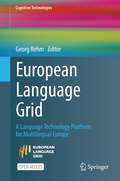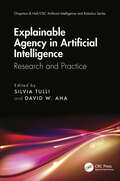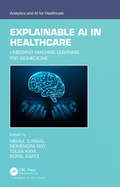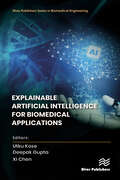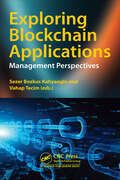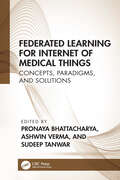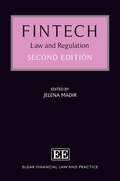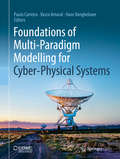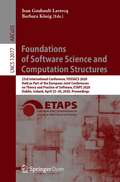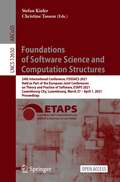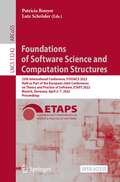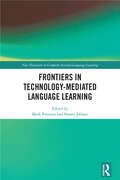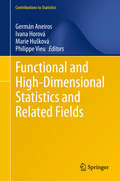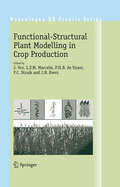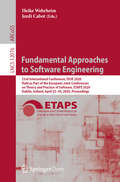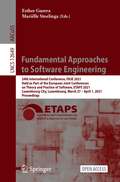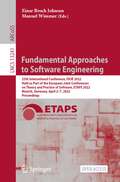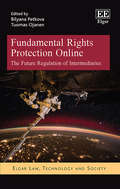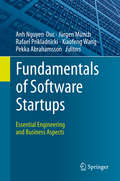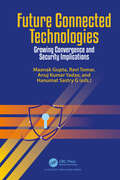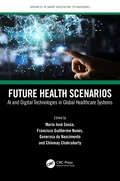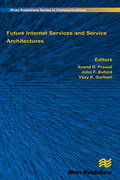- Table View
- List View
European Language Grid: A Language Technology Platform for Multilingual Europe (Cognitive Technologies)
This open access book provides an in-depth description of the EU project European Language Grid (ELG). Its motivation lies in the fact that Europe is a multilingual society with 24 official European Union Member State languages and dozens of additional languages including regional and minority languages. The only meaningful way to enable multilingualism and to benefit from this rich linguistic heritage is through Language Technologies (LT) including Natural Language Processing (NLP), Natural Language Understanding (NLU), Speech Technologies and language-centric Artificial Intelligence (AI) applications. The European Language Grid provides a single umbrella platform for the European LT community, including research and industry, effectively functioning as a virtual home, marketplace, showroom, and deployment centre for all services, tools, resources, products and organisations active in the field. Today the ELG cloud platform already offers access to more than 13,000 language processing tools and language resources. It enables all stakeholders to deposit, upload and deploy their technologies and datasets. The platform also supports the long-term objective of establishing digital language equality in Europe by 2030 – to create a situation in which all European languages enjoy equal technological support. This is the very first book dedicated to Language Technology and NLP platforms. Cloud technology has only recently matured enough to make the development of a platform like ELG feasible on a larger scale. The book comprehensively describes the results of the ELG project. Following an introduction, the content is divided into four main parts: (I) ELG Cloud Platform; (II) ELG Inventory of Technologies and Resources; (III) ELG Community and Initiative; and (IV) ELG Open Calls and Pilot Projects.
Eventforschung: Aktueller Stand und Perspektiven (Markenkommunikation und Beziehungsmarketing)
Die Autorinnen und Autoren des Tagungsbandes ziehen anlässlich des 10-jährigen Jubiläums der Wissenschaftlichen Konferenz Eventforschung Bilanz und werfen gleichzeitig einen Blick in die Zukunft der Live Communication. Das Schwerpunktthema „10 Jahre Eventforschung“ wird mit vielfältigen wissenschaftlichen und praxisorientierten Beiträgen, u. a. zur Digitalisierung, zur Arbeitssituation in der Branche, zum agilen Projektmanagement, zum Datenschutzrecht sowie zur Nachhaltigkeit, bearbeitet. Dieser Band fasst die auf der 10. Eventkonferenz, die am 26. Oktober 2018 an der TU Chemnitz stattfand, vorgestellten und diskutierten Forschungsergebnisse und Praxisbeispiele zusammen.
Evolution in Action: A Festschrift in Honor of Erik D. Goodman (Genetic and Evolutionary Computation)
This edited research monograph brings together contributions from computer scientists, biologists, and engineers who are engaged with the study of evolution and how it may be applied to solve real-world problems. It also serves as a Festschrift dedicated to Erik D. Goodman, the founding director of the BEACON Center for the Study of Evolution in Action, a pioneering NSF Science and Technology Center headquartered at Michigan State University. The contributing authors are leading experts associated with the center, and they serve in top research and industrial establishments across the US and worldwide. Part I summarizes the history of the BEACON Center, with refreshingly personal chapters that describe Erik's working and leadership style, and others that discuss the development and successes of the center in the context of research funding, projects, and careers. The chapters in Part II deal with the evolution of genomes and evolvability. The contributions in Part III discuss the evolution of behavior and intelligence. Those in Part IV concentrate on the evolution of communities and collective dynamics. The chapters in Part V discuss selected evolutionary computing applications in domains such as arts and science, automated program repair, cybersecurity, mechatronics, and genomic prediction. Part VI deals with evolution in the classroom, using creativity in research, and responsible conduct in research training. The book concludes with a special chapter from Erik Goodman, a short biography that concentrates on his personal positive influences and experiences throughout his long career in academia and industry.
Explainable Agency in Artificial Intelligence: Research and Practice (Chapman & Hall/CRC Artificial Intelligence and Robotics Series)
This book focuses on a subtopic of explainable AI (XAI) called explainable agency (EA), which involves producing records of decisions made during an agent’s reasoning, summarizing its behavior in human-accessible terms, and providing answers to questions about specific choices and the reasons for them. We distinguish explainable agency from interpretable machine learning (IML), another branch of XAI that focuses on providing insight (typically, for an ML expert) concerning a learned model and its decisions. In contrast, explainable agency typically involves a broader set of AI-enabled techniques, systems, and stakeholders (e.g., end users), where the explanations provided by EA agents are best evaluated in the context of human subject studies. The chapters of this book explore the concept of endowing intelligent agents with explainable agency, which is crucial for agents to be trusted by humans in critical domains such as finance, self-driving vehicles, and military operations. This book presents the work of researchers from a variety of perspectives and describes challenges, recent research results, lessons learned from applications, and recommendations for future research directions in EA. The historical perspectives of explainable agency and the importance of interactivity in explainable systems are also discussed. Ultimately, this book aims to contribute to the successful partnership between humans and AI systems. Features: • Contributes to the topic of explainable artificial intelligence (XAI) • Focuses on the XAI subtopic of explainable agency • Includes an introductory chapter, a survey, and five other original contributions
Explainable AI in Healthcare: Unboxing Machine Learning for Biomedicine (Analytics and AI for Healthcare)
This book combines technology and the medical domain. It covers advances in computer vision (CV) and machine learning (ML) that facilitate automation in diagnostics and therapeutic and preventive health care. The special focus on eXplainable Artificial Intelligence (XAI) uncovers the black box of ML and bridges the semantic gap between the technologists and the medical fraternity. Explainable AI in Healthcare: Unboxing Machine Learning for Biomedicine intends to be a premier reference for practitioners, researchers, and students at basic, intermediary levels and expert levels in computer science, electronics and communications, information technology, instrumentation and control, and electrical engineering. This book will benefit readers in the following ways: Explores state of art in computer vision and deep learning in tandem to develop autonomous or semi-autonomous algorithms for diagnosis in health care Investigates bridges between computer scientists and physicians being built with XAI Focuses on how data analysis provides the rationale to deal with the challenges of healthcare and making decision-making more transparent Initiates discussions on human-AI relationships in health care Unites learning for privacy preservation in health care
Explainable Artificial Intelligence for Biomedical Applications (River Publishers Series in Biomedical Engineering)
Since its first appearance, artificial intelligence has been ensuring revolutionary outcomes in the context of real-world problems. At this point, it has strong relations with biomedical and today’s intelligent systems compete with human capabilities in medical tasks. However, advanced use of artificial intelligence causes intelligent systems to be black-box. That situation is not good for building trustworthy intelligent systems in medical applications. For a remarkable amount of time, researchers have tried to solve the black-box issue by using modular additions, which have led to the rise of the term: interpretable artificial intelligence. As the literature matured (as a result of, in particular, deep learning), that term transformed into explainable artificial intelligence (XAI). This book provides an essential edited work regarding the latest advancements in explainable artificial intelligence (XAI) for biomedical applications. It includes not only introductive perspectives but also applied touches and discussions regarding critical problems as well as future insights. Topics discussed in the book include: XAI for the applications with medical images XAI use cases for alternative medical data/task Different XAI methods for biomedical applications Reviews for the XAI research for critical biomedical problems. Explainable Artificial Intelligence for Biomedical Applications is ideal for academicians, researchers, students, engineers, and experts from the fields of computer science, biomedical, medical, and health sciences. It also welcomes all readers of different fields to be informed about use cases of XAI in black-box artificial intelligence. In this sense, the book can be used for both teaching and reference source purposes.
Exploring Blockchain Applications: Management Perspectives
In this book, the development process of blockchain algorithms and examples of their applications in different sectors are explored. The opportunities and challenges of blockchain implementations that arise in making technological innovations usable in corporate structures are discussed. In this respect, the book aims to deal with both the conceptual framework and the real challenges and opportunities encountered in practice regarding the blockchain applications. It is tried to contribute to the literature by presenting practical blockchain application suggestions to the readers on a scientific basis.It is a fact that blockchain technology is considered one of the most disruptive and revolutionary innovations after the invention of the internet. Blockchain technology, which was first used for cross-border payments, is coming up with a new application area in a different sector every day. The main purpose of Blockchain-based systems is to spread the "trust" service provided by a central intermediary to machines in transactions between two parties. Thus, it removes the need for this trust from the monopoly of a single intermediary. Blockchain implementation scenarios are to establish math-based trust in an untrusted environment.While exploring the complexity of blockchain applications in different sectors, the emerging risks are also examined from a management perspective. In particular, it is aimed to be a key work that the management levels of the enterprises can benefit from in the decision-making processes.It will be seen that blockchain technologies will be used unlimitedly in design, planning, management and decision making. This book will also introduce new visions for practitioners to use different blockchain technologies and methodologies to face problems.
Federated Learning for Internet of Medical Things: Concepts, Paradigms, and Solutions
This book intends to present emerging Federated Learning (FL)-based architectures, frameworks, and models in Internet of Medical Things (IoMT) applications. It intends to build on the basics of the healthcare industry, the current data sharing requirements, and security and privacy issues in medical data sharing. Once IoMT is presented, the book shifts towards the proposal of privacy-preservation in IoMT, and explains how FL presents a viable solution to these challenges. The claims are supported through lucid illustrations, tables, and examples that present effective and secured FL schemes, simulations, and practical discussion on use-case scenarios in a simple manner. The book intends to create opportunities for healthcare communities to build effective FL solutions around the presented themes, and to support work in related areas that will benefit from reading the book. It also intends to present breakthroughs and foster innovation in FL-based research, specifically in the IoMT domain. The emphasis of this book is on understanding the contributions of IoMT to healthcare analytics, and its aim is to provide insights including evolution, research directions, challenges, and the way to empower healthcare services through federated learning. The book also intends to cover the ethical and social issues around the recent advancements in the field of decentralized Artificial Intelligence. The book is mainly intended for undergraduates, post-graduates, researchers, and healthcare professionals who wish to learn FL-based solutions right from scratch, and build practical FL solutions in different IoMT verticals.
Festschrift zum 90. Geburtstag von Prof. Dr. Dr. h.c. mult. Günter Hotz
Die vorliegende Festschrift zum 90. Geburtstag von Prof. Dr. Dr. h.c. mult. Günter Hotz zeigt insbesondere über Kurzberichte der Doktorkinder die Nachwirkung von Günter Hotz’ Schaffen auf. Sie gibt damit auch einen schönen Überblick über die Informatik in Deutschland.
FinTech: Law and Regulation (Elgar Financial Law and Practice series)
This fully updated and revised second edition provides a practical examination of the opportunities and challenges presented by the rapid development of FinTech in recent years, particularly for regulators, who must decide how to apply current law to ever-changing concepts driven by continually advancing technologies. It addresses new legislative guidance on the treatment of cryptoassets and smart contracts, the European Commission’s Digital Finance Strategy and FinTech Action Plan, as well as analysing significant recent case law.Key features of the second edition include:Discussion of the impact of Brexit and the Covid-19 pandemic on the development and adoption of FinTech productsDetailed treatment of a broad spectrum of legal and regulatory issues in the FinTech sector, featuring insights from 33 experts from 10 countriesExamination of potential blockchain applications in the financial services industry, with a focus on smart contracts and regulatory challenges to widespread adoptionAnalysis of the key legal, regulatory and compliance issues surrounding FinTech developments in banking, payments and fundraising, from patents and robo-advice to novel solutions for supporting innovation such as regulatory sandboxes.Offering a thorough guide to the sector for practical use, this book will be invaluable for in-house lawyers as well as law firms looking for an overview of the legal and regulatory landscape of FinTech. It will also be an essential text for academics and students looking to understand the key issues in the field, as well as those interested in perspectives across the breadth of the sector.
Foundations of Multi-Paradigm Modelling for Cyber-Physical Systems
This open access book coherently gathers well-founded information on the fundamentals of and formalisms for modelling cyber-physical systems (CPS). Highlighting the cross-disciplinary nature of CPS modelling, it also serves as a bridge for anyone entering CPS from related areas of computer science or engineering.Truly complex, engineered systems—known as cyber-physical systems—that integrate physical, software, and network aspects are now on the rise. However, there is no unifying theory nor systematic design methods, techniques or tools for these systems. Individual (mechanical, electrical, network or software) engineering disciplines only offer partial solutions. A technique known as Multi-Paradigm Modelling has recently emerged suggesting to model every part and aspect of a system explicitly, at the most appropriate level(s) of abstraction, using the most appropriate modelling formalism(s), and then weaving the results together to form a representation of the system. If properly applied, it enables, among other global aspects, performance analysis, exhaustive simulation, and verification. This book is the first systematic attempt to bring together these formalisms for anyone starting in the field of CPS who seeks solid modelling foundations and a comprehensive introduction to the distinct existing techniques that are multi-paradigmatic. Though chiefly intended for master and post-graduate level students in computer science and engineering, it can also be used as a reference text for practitioners.
Foundations of Software Science and Computation Structures: 23rd International Conference, FOSSACS 2020, Held as Part of the European Joint Conferences on Theory and Practice of Software, ETAPS 2020, Dublin, Ireland, April 25–30, 2020, Proceedings (Lecture Notes in Computer Science #12077)
This open access book constitutes the proceedings of the 23rd International Conference on Foundations of Software Science and Computational Structures, FOSSACS 2020, which took place in Dublin, Ireland, in April 2020, and was held as Part of the European Joint Conferences on Theory and Practice of Software, ETAPS 2020.The 31 regular papers presented in this volume were carefully reviewed and selected from 98 submissions.The papers cover topics such as categorical models and logics; language theory, automata, and games; modal, spatial, and temporal logics; type theory and proof theory; concurrency theory and process calculi; rewriting theory; semantics of programming languages; program analysis, correctness, transformation, and verification; logics of programming; software specification and refinement; models of concurrent, reactive, stochastic, distributed, hybrid, and mobile systems; emerging models of computation; logical aspects of computational complexity; models of software security; and logical foundations of data bases.
Foundations of Software Science and Computation Structures: 24th International Conference, FOSSACS 2021, Held as Part of the European Joint Conferences on Theory and Practice of Software, ETAPS 2021, Luxembourg City, Luxembourg, March 27 – April 1, 2021, Proceedings (Lecture Notes in Computer Science #12650)
This open access book constitutes the proceedings of the 24th International Conference on Foundations of Software Science and Computational Structures, FOSSACS 2021, which was held during March 27 until April 1, 2021, as part of the European Joint Conferences on Theory and Practice of Software, ETAPS 2021. The conference was planned to take place in Luxembourg and changed to an online format due to the COVID-19 pandemic. The 28 regular papers presented in this volume were carefully reviewed and selected from 88 submissions. They deal with research on theories and methods to support the analysis, integration, synthesis, transformation, and verification of programs and software systems.
Foundations of Software Science and Computation Structures: 25th International Conference, FOSSACS 2022, Held as Part of the European Joint Conferences on Theory and Practice of Software, ETAPS 2022, Munich, Germany, April 2–7, 2022, Proceedings (Lecture Notes in Computer Science #13242)
This open access book constitutes the proceedings of the 25th International Conference on Foundations of Software Science and Computational Structures, FOSSACS 2022, which was held during April 4-6, 2022, in Munich, Germany, as part of the European Joint Conferences on Theory and Practice of Software, ETAPS 2022. The 23 regular papers presented in this volume were carefully reviewed and selected from 77 submissions. They deal with research on theories and methods to support the analysis, integration, synthesis, transformation, and verification of programs and software systems.
Frontiers in Technology-Mediated Language Learning (New Directions in Computer Assisted Language Learning)
In the context of continuing technological innovation, the field of technology-mediated foreign language learning is expanding rapidly. Advances in digital technologies are providing researchers with opportunities to investigate a range of exciting new areas of research. This edited volume is designed to showcase a selection of recent cutting-edge innovations. This publication incorporates chapters dealing with the use virtual reality, social networking, speech technologies and social semiotics. Also included are chapters that focus on the relevant review work that is vital for progress in the field. This publication provides an indispensable guide to a wide range of practitioners, including language educators, researchers, graduate students, learning scientists and instructional designers.
Functional and High-Dimensional Statistics and Related Fields (Contributions to Statistics)
This book presents the latest research on the statistical analysis of functional, high-dimensional and other complex data, addressing methodological and computational aspects, as well as real-world applications. It covers topics like classification, confidence bands, density estimation, depth, diagnostic tests, dimension reduction, estimation on manifolds, high- and infinite-dimensional statistics, inference on functional data, networks, operatorial statistics, prediction, regression, robustness, sequential learning, small-ball probability, smoothing, spatial data, testing, and topological object data analysis, and includes applications in automobile engineering, criminology, drawing recognition, economics, environmetrics, medicine, mobile phone data, spectrometrics and urban environments. The book gathers selected, refereed contributions presented at the Fifth International Workshop on Functional and Operatorial Statistics (IWFOS) in Brno, Czech Republic. The workshop was originally to be held on June 24-26, 2020, but had to be postponed as a consequence of the COVID-19 pandemic. Initiated by the Working Group on Functional and Operatorial Statistics at the University of Toulouse in 2008, the IWFOS workshops provide a forum to discuss the latest trends and advances in functional statistics and related fields, and foster the exchange of ideas and international collaboration in the field.
Functional-Structural Plant Modelling in Crop Production (Wageningen UR Frontis Series #22)
Functional-structural plant models (FSPMs) describe in quantitative terms the development over time of the three-dimensional (3D) structure of plants as governed by physiological processes and affected by environmental factors. FSPMs are particularly suited to analyse problems in which the spatial structure of the plant or its canopy is an essential factor to explain, e.g., plant competition (intra-plant, inter-plant, inter-species) and the effects of plant configuration and plant manipulation (e.g., pruning and harvesting) on yield and produce quality. This book describes the philosophy of functional-structural plant modelling and several tools for making FSPMs; it outlines methods for measuring essential parameters, including those pertaining to plant structure. As FSPMs offer new opportunities to model sink–source interactions, the physiological theory and modelling approaches regarding partitioning of carbon are given specific attention. Examples of application of FSPMs include wheat modelling in the context of remote sensing and the analysis of predator–prey insect interactions on glasshouse plants. The book will be useful for scientists and advanced students interested in innovative approaches in plant and crop modelling.
Fundamental Approaches to Software Engineering: 23rd International Conference, FASE 2020, Held as Part of the European Joint Conferences on Theory and Practice of Software, ETAPS 2020, Dublin, Ireland, April 25–30, 2020, Proceedings (Lecture Notes in Computer Science #12076)
This open access book constitutes the proceedings of the 23rd International Conference on Fundamental Approaches to Software Engineering, FASE 2020, which took place in Dublin, Ireland, in April 2020, and was held as Part of the European Joint Conferences on Theory and Practice of Software, ETAPS 2020.The 23 full papers, 1 tool paper and 6 testing competition papers presented in this volume were carefully reviewed and selected from 81 submissions.The papers cover topics such as requirements engineering, software architectures, specification, software quality, validation, verification of functional and non-functional properties, model-driven development and model transformation, software processes, security and software evolution.
Fundamental Approaches to Software Engineering: 24th International Conference, FASE 2021, Held as Part of the European Joint Conferences on Theory and Practice of Software, ETAPS 2021, Luxembourg City, Luxembourg, March 27 – April 1, 2021, Proceedings (Lecture Notes in Computer Science #12649)
This open access book constitutes the proceedings of the 24th International Conference on Fundamental Approaches to Software Engineering, FASE 2021, which took place during March 27–April 1, 2021, and was held as part of the Joint Conferences on Theory and Practice of Software, ETAPS 2021. The conference was planned to take place in Luxembourg but changed to an online format due to the COVID-19 pandemic. The 16 full papers presented in this volume were carefully reviewed and selected from 52 submissions. The book also contains 4 Test-Comp contributions.
Fundamental Approaches to Software Engineering: 25th International Conference, FASE 2022, Held as Part of the European Joint Conferences on Theory and Practice of Software, ETAPS 2022, Munich, Germany, April 2–7, 2022, Proceedings (Lecture Notes in Computer Science #13241)
This open access book constitutes the proceedings of the 25th International Conference on Fundamental Approaches to Software Engineering, FASE 2022, which was held during April 4-5, 2022, in Munich, Germany, as part of the European Joint Conferences on Theory and Practice of Software, ETAPS 2022. The 17 regular papers presented in this volume were carefully reviewed and selected from 64 submissions. The proceedings also contain 3 contributions from the Test-Comp Competition. The papers deal with the foundations on which software engineering is built, including topics like software engineering as an engineering discipline, requirements engineering, software architectures, software quality, model-driven development, software processes, software evolution, AI-based software engineering, and the specification, design, and implementation of particular classes of systems, such as (self-)adaptive, collaborative, AI, embedded, distributed, mobile, pervasive, cyber-physical, or service-oriented applications.
Fundamental Rights Protection Online: The Future Regulation of Intermediaries (Elgar Law, Technology and Society series)
Fundamental Rights Protection Online presents an in-depth analysis of national, supranational and international attempts at online speech regulation, illustrating how the law has been unsettled on how to treat intermediaries. In this book, expert contributors explore how problems ranging from disinformation to hate speech to copyright violations are framed and tackled though legislation, codes of conduct and judicial interpretation. The chapters discuss positive law developments in the intersection of intermediary liability and rights, considering both the history and current intellectual debates surrounding European and US legislative initiatives. In addition to examining how the European Union and individual European nations regulate speech online, the book also analyses the e-Commerce Directive, the case law of the European Court of Human Rights and principles established under the United Nations. It concludes that content regulation online is best captured by the notion of ‘speech curation’, involving both private and public actors. Taking a human rights approach to online speech regulation, this timely book will be critical reading for academics and students of law, particularly those with an interest in internet law, information law and human rights. Its exploration of intermediary liability and fundamental rights will also be beneficial for legal practitioners working in online rights protection.
Fundamentals of Software Startups: Essential Engineering and Business Aspects
This book discusses important topics for engineering and managing software startups, such as how technical and business aspects are related, which complications may arise and how they can be dealt with. It also addresses the use of scientific, engineering, and managerial approaches to successfully develop software products in startup companies.The book covers a wide range of software startup phenomena, and includes the knowledge, skills, and capabilities required for startup product development; team capacity and team roles; technical debt; minimal viable products; startup metrics; common pitfalls and patterns observed; as well as lessons learned from startups in Finland, Norway, Brazil, Russia and USA. All results are based on empirical findings, and the claims are backed by evidence and concrete observations, measurements and experiments from qualitative and quantitative research, as is common in empirical software engineering.The book helps entrepreneurs and practitioners to become aware of various phenomena, challenges, and practices that occur in real-world startups, and provides insights based on sound research methodologies presented in a simple and easy-to-read manner. It also allows students in business and engineering programs to learn about the important engineering concepts and technical building blocks of a software startup. It is also suitable for researchers at different levels in areas such as software and systems engineering, or information systems who are studying advanced topics related to software business.
Future Connected Technologies: Growing Convergence and Security Implications
The main aim of the book is to familiarize readers with the concepts of convergence of different connected and smart domains that are assisted by Cloud Computing, core technologies behind Cloud Computing, driving factors towards Cloud Computing, and security challenges and proposed solutions in Cloud Computing. The book covers not only the cloud, but also other pertinent topics such as Machine Learning, Deep Learning, IoT and Fog/Edge Computing. The last section of the book mainly focuses on the security aspects of connected technologies. The highpoints of the book is that it reviews the relation and combination of the mentioned topics, which together creates a better understanding about almost every aspect of Cloud Computing & related technologies.
Future Health Scenarios: AI and Digital Technologies in Global Healthcare Systems (Advances in Smart Healthcare Technologies)
Digital technologies is a major emerging area to invest and research in new models of health management. Future health scenarios are constituted by technologies in health and clinical decision-making systems. This book provides a unique multidisciplinary approach for exploring the potential contribution of AI and digital technologies in enabling global healthcare systems to respond to urgent twenty-first-century challenges. Deep analysis has been made regarding telemedicine using big data, deep learning, robotics, mobile and remote applications. Features: Focuses on prospective scenarios in health to predict possible futures. Addresses the urgent needs of the key population, socio-technical and health themes. Covers health innovative practices as 3D models for surgeries, big data to treat rare diseases, and AI robot for heart treatments. Explores telemedicine using big data, deep learning, robotics, mobile and remote applications. Reviews public health based on predictive analytics and disease trends. This book is aimed at researchers, professionals, and graduate students in computer science, artificial intelligence, decision support, healthcare technology management, biomedical engineering, and robotics.
Future Internet Services and Service Architectures
Future Internet Services and Service Architectures presents state-of-the-art results in services and service architectures based on designs for the future Internet and related emerging networks. The discussions include technology issues, key services, business models, and security. The work describes important trends and directions. Future Internet Services and Service Architectures is intended to provide readers with a comprehensive reference for the most current developments in the field. It offers broad coverage of important topics with twenty chapters covering both technology and applications written by international experts. The 20 chapters of Future Internet Services and Service Architectures are organized into the following five sections:-• Future Internet Services -- This section contains four chapters which present recent proposals for a new architecture for the Internet, with service delivery in the Future Internet as the key focus.• Peer-to-Peer Services -- Using the P2P network overlay as a service platform, five chapters explore the P2P architecture and its use for streaming services, communication services, and service discovery.• Virtualization -- Virtualization and its benefits for resource management, supporting hetereogeneity, and isolation are the basis for five chapters which describe virtualization at the endpoint, in the cloud, and in the network.• Event-Distribution -- Publish/Subscribe mechanisms are important for applications which require time-sensitive delivery of notifications. The two chapters in this section present recent developments in publish/subscribe load balancing and in sensor networks.• VANETs - Vehicular Ad Hoc Networks (VANETs) are a network technology which are designed for vehicle-to-vehicle and vehicle-to-infrastructure connectivity for moving vehicles. The four chapters in this section provide an introduction to VANETs, routing, services and system architecture.Future Internet Services and Service Architectures is complemented by a separate volume, Advances in Next Generation Services and Service Architectures, which covers emerging services and service architectures, IPTV, context awareness, and security.
